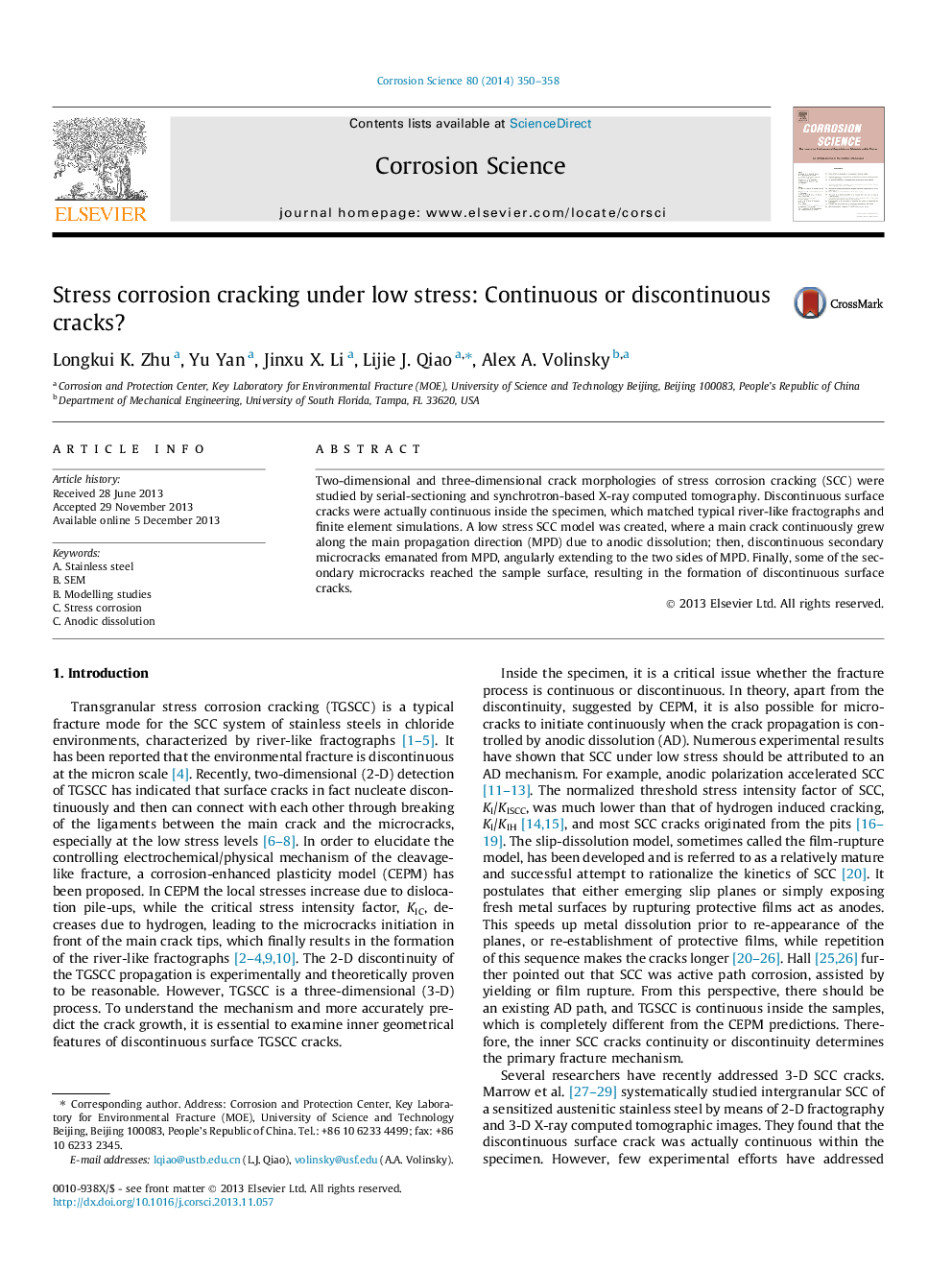| Article ID | Journal | Published Year | Pages | File Type |
|---|---|---|---|---|
| 1468956 | Corrosion Science | 2014 | 9 Pages |
•Discontinuous surface SCC cracks are continuous inside specimens.•This phenomenon matches typical river-like fractographs.•The normal stress and strain concentrate at the defect shoulders.•The main crack grows continuously due to anodic dissolution.•Secondary cracks emanate from the main propagation direction.
Two-dimensional and three-dimensional crack morphologies of stress corrosion cracking (SCC) were studied by serial-sectioning and synchrotron-based X-ray computed tomography. Discontinuous surface cracks were actually continuous inside the specimen, which matched typical river-like fractographs and finite element simulations. A low stress SCC model was created, where a main crack continuously grew along the main propagation direction (MPD) due to anodic dissolution; then, discontinuous secondary microcracks emanated from MPD, angularly extending to the two sides of MPD. Finally, some of the secondary microcracks reached the sample surface, resulting in the formation of discontinuous surface cracks.
Graphical abstractDiscontinuous surface crack is continuous inside the specimenFigure optionsDownload full-size imageDownload as PowerPoint slide
